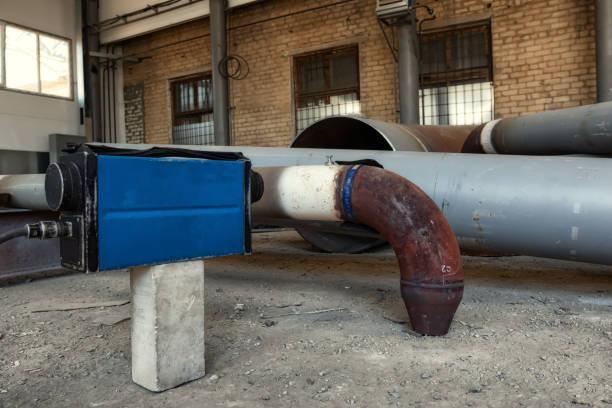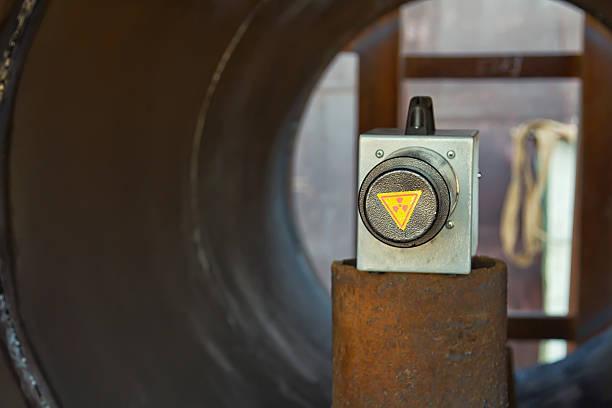Table of Content
- What Does Radiography Mean?
- Significance Of Radiography Testing
- Applications of Radiography Testing
- Why is there a requirement for a Radiography Test?
- Principles of Radiography Testing
- Advantages of Radiography Testing
- Types of Radiography Testing
- Conclusion
Let's start this article first by understanding what radiography & radiography testing is all about.
What Does Radiography Mean?
Radiography is a technique that uses X-rays and gamma rays, or related ionizing and non-ionizing radiation, to watch out for the internal structure of a subject in the form of an image.
Radiography Applications involve industrial radiography and medical radiography, i.e. “diagnostic and “therapeutic”.
Industrial radiography falls under the Non-destructive Testing technique that enables different kinds of manufactured elements to go through the whole evaluation process in order to analyze the quality, value, and internal structure of the sample object.
X-rays or gamma rays, of them can be used in Industrial Radiography.
X-rays and gamma rays are two different forms of electromagnetic radiation.
The primary difference present between different forms of Electromagnetic Energy is associated with wavelength.
X-rays and gamma rays, both of them have the shortest wavelength, and this feature enables numerous substances like carbon steel and many other metals to permeate, pass through, and depart.
Certain NDT Techniques involve Industrial Computed Tomography.
Significance of Radiography Testing
Radiographic Testing (RT) is a widespread non-destructive testing (NDT) technique that makes use of x-rays or gamma rays to evaluate the innermost arrangement of the manufactured products to identify any drawbacks or defects present in the object.
During the radiography test, the test area is positioned between the source of the radiation and the detector or the Radiographic Film.
The thickness and density differences present in the test part of the material reduce the penetration of the radiation through interaction procedures that include absorption and dispersion.
The disparities in absorption are recorded consequently, either electronically or on the film(s).
There are numerous imaging NDT Techniques available in industrial radiography.
Methods for illustrating the final image include real-time radiography(RTR), Film radiographic, Computed Radiography (CR), digital radiography(DR), and computed tomography (CT).
There are two distinct types of radioactive sources accessible for industrial use - X-ray and Gamma-ray.
These two radiation sources use higher energy levels, i.e. they are of shorter wavelength.
Radiographic Testing (RT) includes radioactivity, and because of this, it becomes necessary to abide by all the local rules & regulations during the entire process.
Applications of Radiography Testing
Radiographic Testing (RT) is broadly used in various fields such as :
- Aerospace Industries
- Transport Industries
- Petrochemical Industries
- Military Defense
- Automotive Industries
- Offshore Industries
- Marine Industries
- Power-gen Industries
- Waste Management
- Manufacturing Industries

Why is there a requirement for a Radiography Test?
Radiographic Testing contributes to delivering a permanent and strong record as an X-ray image which gives us an understanding & knowledge of the internal structure of the substance.
The portion of energy that is consumed by the subject relies on its density and thickness, and the energy that is not consumed by the subject is thus exposed to the radiographic film.
Additionally, there are a lot of benefits of the Radiography Test. You can learn more about its benefits in the next segment.
Principles of Radiography Testing
It is established on the principle that radiation is consumed and dispersed when it passes through a subject.
If there are differences in density or thickness in the subject then more or less radiation passes through and thus, results in affecting the exposure of the film.
Advantages of Radiography Testing
- It helps in inspecting the assembled components.
- Most minor surface preparation is needed.
- Radiography Testing is excellent in detecting surface flaws as well as subsurface flaws.
- This NDT Testing Method provides a solid record of the assessment performed.
- Radiography Testing verified internal flaws even on complicated arrangements.
- It isolates and examines the internal components of the sample material.
- It automatically observes and measures the internal weaknesses present in the sample object.
- It helps in calculating angles and dimensions within the sample without dividing it into different sections.
- It is highly sensitive to specific shifts such as Corrosion, defects, material density, and thickness.

Types of Radiography Testing
There are various types of Radiography Testing techniques, including Digital Radiography and conventional radiography test methods of numerous forms.
Each one of them acts differently but slightly, and they have their part of advantages and disadvantages. Let's look closely into them :
1) Conventional Radiography
Conventional Radiography utilizes a film that is sensitive in nature and responds to the emitted radiation in order to capture a picture of the part to be examined.
This particular image is then evaluated to find out if there are any indications or clues of defects or damage.
Furthermore, the major constraint of this NDT Method is that the films can be used only once, and it takes forever & a day to process and define.
2) Digital Radiography
When compared to conventional radiography, there's no requirement for a film in Digital Radiography.
Rather, a digital detector is utilized to disclose radiographic pictures immediately on a computer.
This provides significantly less exposure time so that the pictures can be analysed & defined shortly.
Moreover, digital images are of great quality, whereas conventional radiographic images are not that great.
With the capability of capturing high-quality pictures, this particular technology is used to recognize defects in the material and foreign elements in a system, evaluate insulation for corrosion and examine weld repairs.
There are four most common and widely accepted digital radiography methods used in the Oil Gas Industry, and chemical manufacturing industries.
They are Computed Radiography, computed tomography, direct radiography and real-time radiography.
A) Computed Radiography (CR)
Computed Radiography (CR) uses a phosphor imaging plate for the replacement of the film in conventional radiography methods.
This NDT Technique is quicker than any other film radiography, yet slower than direct radiography.
Computed radiography needs various supplementary steps when compared to direct radiography.
At first, the picture of an element is indirectly taken using a phosphor plate, and then it is transformed into a digital signal that can be further shown on a computer screen.
The quality of the image is satisfactory, but it can be improved by implementing appropriate tools and NDT Methods.
It is significant to understand and learn how NDT Equipment & Tools like adjusting contrast have a great influence on the picture.
Proper care should be taken to ensure that the small deformities are not invisible after making all the adequate improvements.
B) Direct Radiography (DR)
Direct radiography (DR) is also a type of digital radiography and Computed Radiography.
The major discrepancy is in the way of capturing an image.
In direct radiography, a flat panel detector is utilized to capture an image directly and show that image on a computer. However, this NDT Method is quick and elicits images of high quality.
Direct radiography is more costly when compared to Computed Radiography.
C) Real-Time Radiography (RTR)
Real-time radiography (RTR) is the same as its name indicates and is a type of Digital Radiography that occurs in the actual moment.
Real-time radiography (RTR) releases radiation through an object. Then, these beams interact with an extraordinary phosphor screen or a flat panel detector that comprises microelectronic sensors.
The interactivity between the radiation and the panel establishes a digital picture that can be seen and evaluated at the same time.
Because of the extra radiation that touches the screen, bright spots in the image take place.
This correlates to the less or thinner dense portion of the element. Contrarily, because of the less radiation that interacts with the screen, darker areas in the image can be observed and help in objectifying the thicker area in the component.
In addition to the chance of preparing the pictures making them available quickly, and assessing them in real-time, Real-time radiography (RTR) gives various other benefits.
Digital images do not need manual storage space, and hence, it becomes easier to save, archive & transfer.
However, this technique also has many disadvantages. When it is compared to Conventional Radiography, RTR has less contrast sensitivity and restricted image resolution.
Images developed via RTR often experience unstable lighting, bad sharpness & noise, and restricted resolution. These aspects have a crucial impact on the quality of the image.
D) Computed Tomography
Computed Tomography (CT) is a method that takes thousands of 2D radiographic scans & it depends on the size of the object and overlaps them to develop a 3D X-ray picture.
In an industrial site, CT can be accomplished in two methods. In the first method, the object that needs to be inspected continues to stay stagnant, whereas the X-ray detector and the radiation source keep rotating around the object.
This method is commonly used for huge objects. Now, in the second method, the radiation source and X-ray detector continue to stay fixed, whereas the component rotates 360 degrees. This second NDT Method is beneficial when the object is tiny or has complicated geometry.
Despite the fact that this technology is contemporary, costly, and needs a large amount of space for storing, CT gives highly precise pictures and it is possible to repeat & reproduce and decrease human mistakes.
Conclusion
In this article, we have covered all the necessary topics related to Radiographic Testing, such as its meaning, types of radiography testing, advantages & disadvantages, and applications.
If you want to dig deeper into such kinds of topics, visit – OnestopNDT.
You will get all the other information on our website as OnestopNDT has all the relevant information in one place! Our experts at OnestopNDT are always there to communicate with you and solve all your queries. Reach out to us now!
References
1. XCEL









